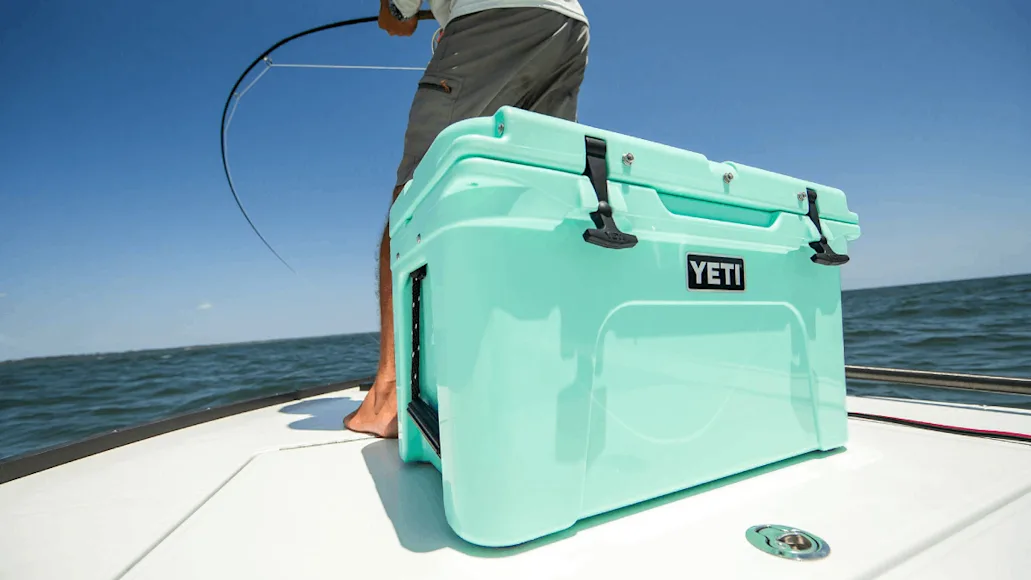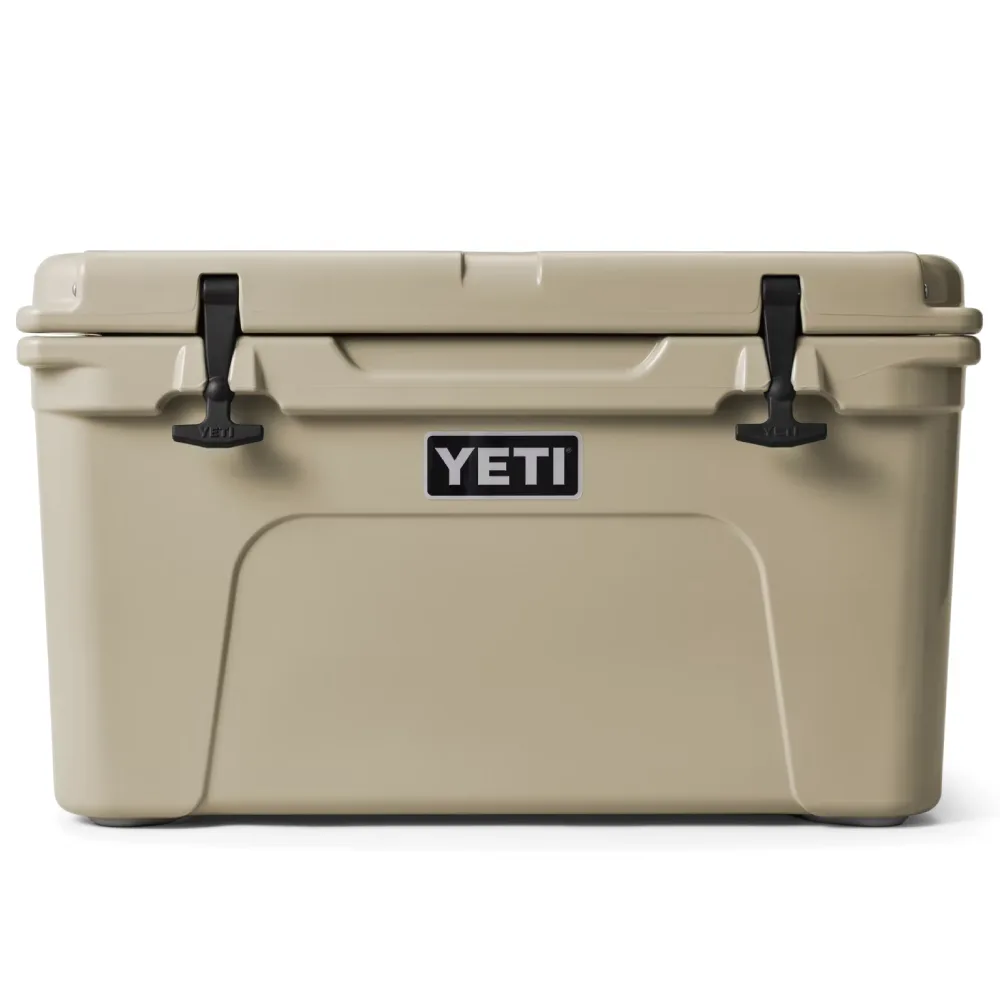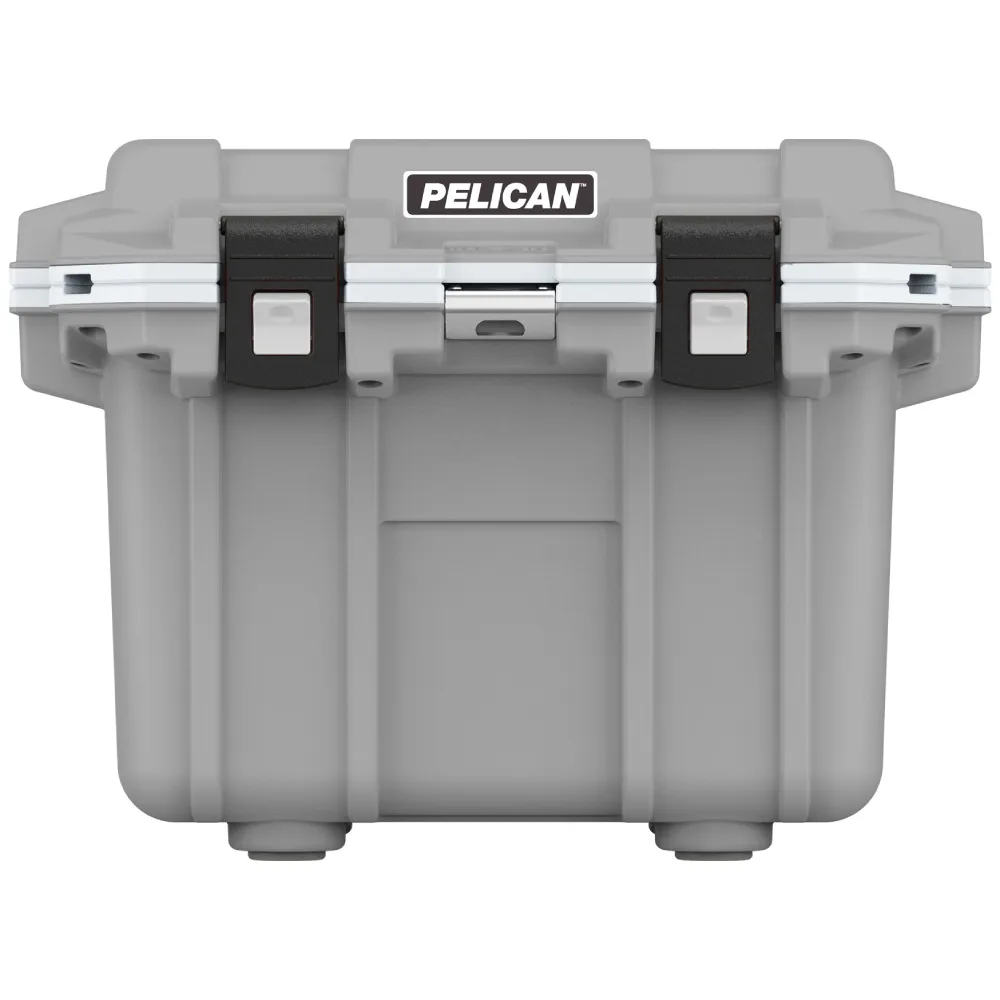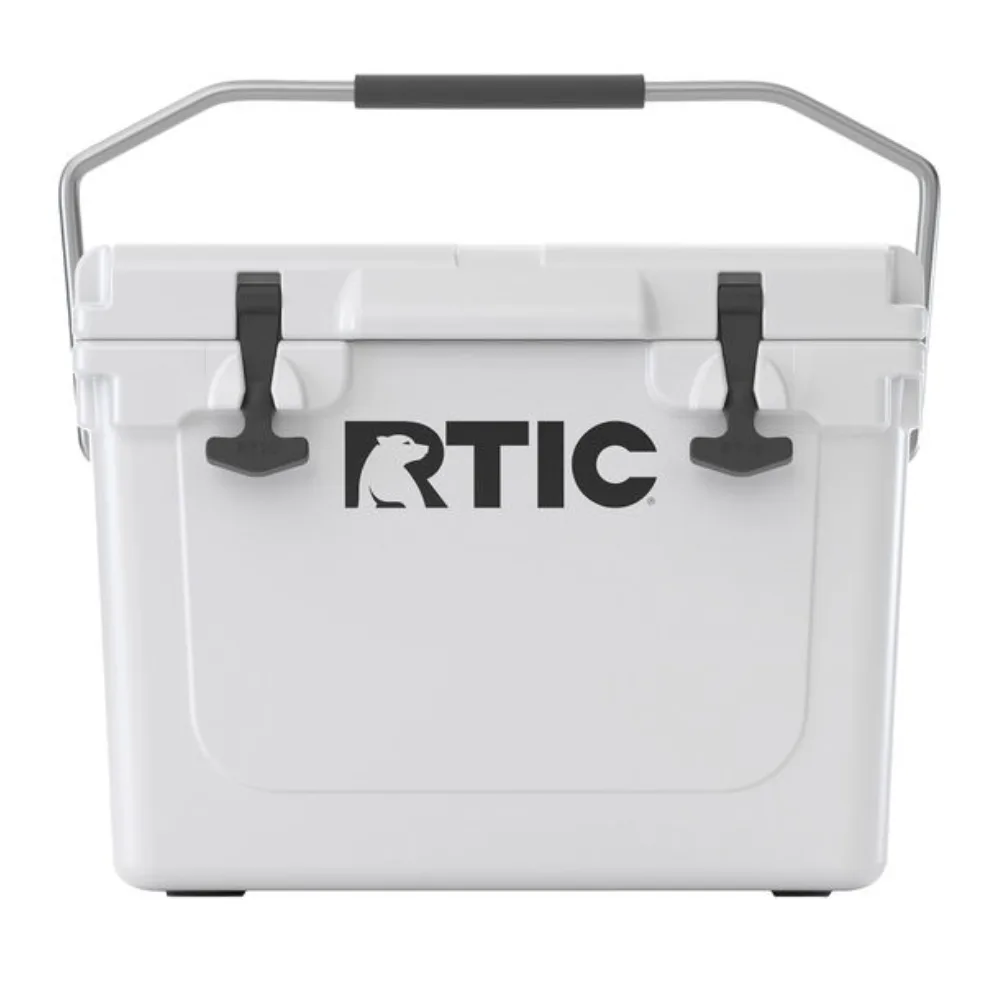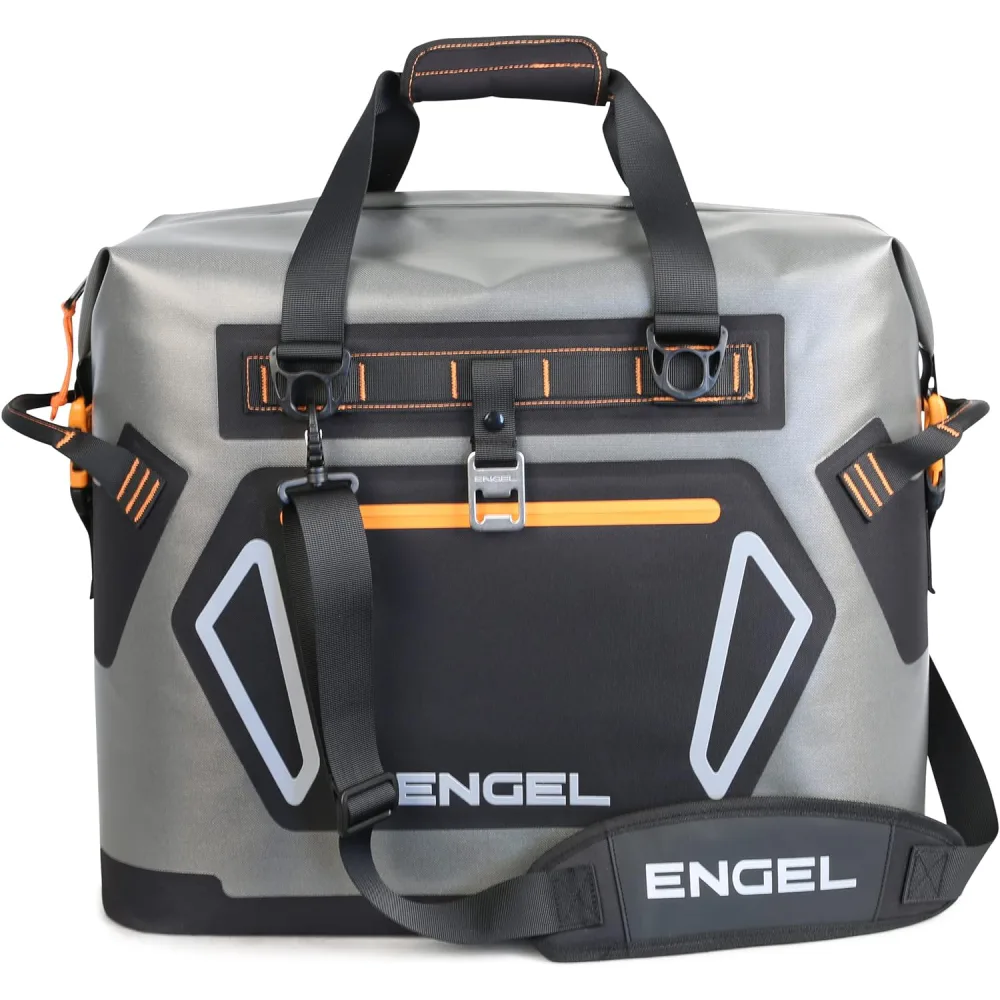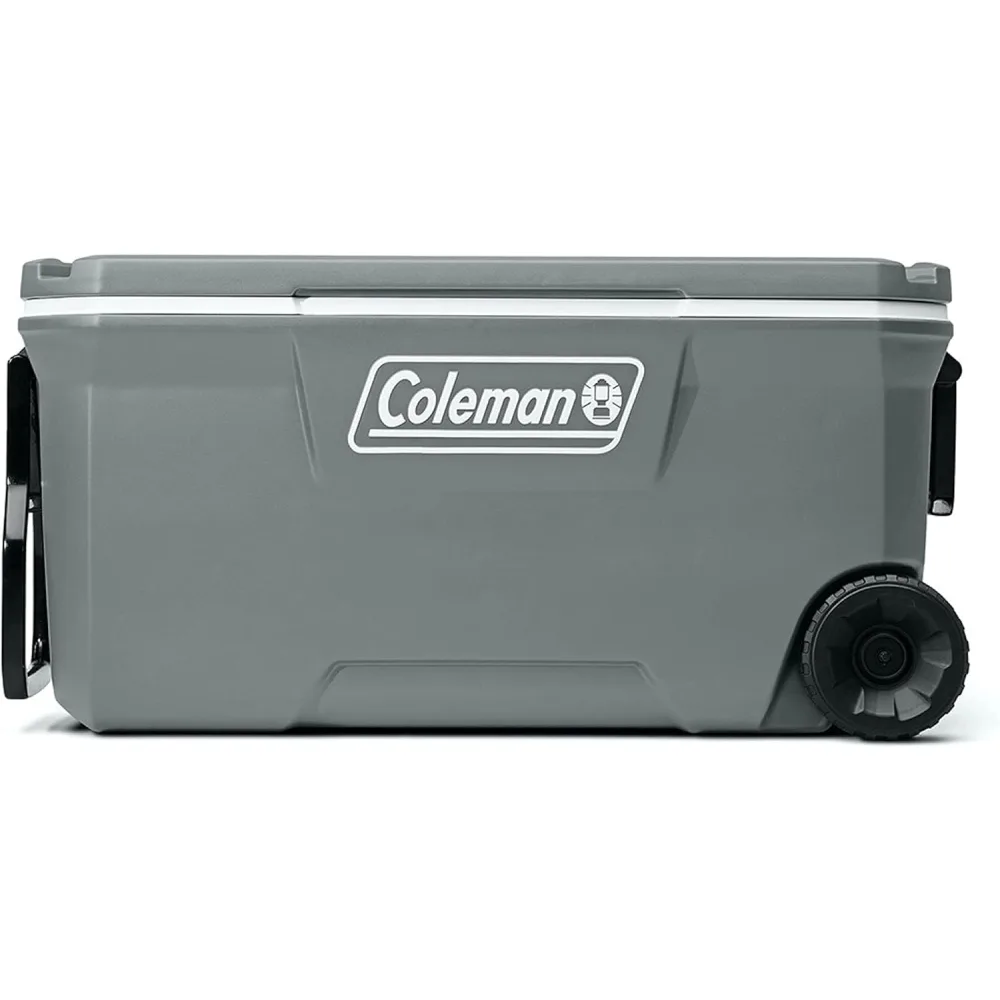We may earn revenue from the products available on this page and participate in affiliate programs. Learn more
When I began boating with my parents in the 1970s, boat coolers were either plastic or metal. There weren’t that many options, and no matter the construction, fresh ice was needed on a near daily basis. Boaters today have a wide array of options available to them, and that’s a good thing, given the number of people taking to the water. One thing that hasn’t changed in all these years is the conditions on the water. Direct sunlight, heat, wind, waves, and sudden cloudbursts are all still part of the equation. The best boat coolers today withstand these conditions, keep the contents cold, and are capable of doing so day after day.
Best Overall: Yeti Tundra 45
Best Cooler Bag: Engel HD30
Best Small: Pelican 30QT Elite Cooler
Best with Wheels: Coleman 316 Series Wheeled Cooler
Best for the Money: RTIC Ultra-Tough 20QT Hard Cooler
Best Overall: Yeti Tundra 45
Specs
External Dimensions: 16.1” x 15.4” x 25.8”
Weight (Empty): 23 lbs
Capacity: 28 12-oz. cans (using 2:1 ice-to-can ratio)
Pros
Impressive 3 inches of Permafrost insulation
Coldlock freezer quality gasket
Neverfail hinge system
Molded handles for single person transport
Cons
Weight
Price
Handing out the best overall boat cooler award was sort of like deciding what is the best Yeti cooler. For me, it was a toss-up between the Tundra 45 and Tundra 65. I have both and use each extensively. But when it comes to boating, I use the 45 the most. Why? Versatility and fit.
Like most people, the majority of my boating is done in small boats and this cooler fits well in all but the smallest and most specialized craft (think fishing kayaks and personal pontoon style kick-boats). I’ve used this cooler for multiple days floating rivers in our drift boat and while fishing from small motorboats.
This cooler easily holds enough food and beverage for a family of four on an all-day outing. At the end of the day, it’s not a question of “Is there ice left” but rather, “How many days until I need more ice?” Because of this, it’s the cooler I use most often as an ice chest for keeping catch fresh. (If you’re targeting larger fish species you might want to consider the Tundra 65 – I told you it was a toss-up).
I particularly like the T-Rex heavy-duty rubber latches. I can operate these with one hand yet when latched, they secure the lid and make the most of the Coldlock gasket. As is the case with rotomolded coolers like the Yeti, the tradeoff for the superior insulating performance is weight. The 45 weighs 23 pounds empty, and the 65 comes in at 29. When fully loaded, I’m sure to be careful lifting mine from vehicle to boat.
Best Cooler Bag: Engel HD30
Specs
Exterior Dimensions: 20.5” x 9.5” x 17”
Weight (Empty): 5.25 lbs
Capacity: 32 quarts
Materials: 840-denier fiber outer shell
Pros
Welded seams (versus sewn)
Closed-cell foam insulation
Welded waterproof and air resistant zipper
Single padded shoulder strap or tote handles for transport
Cons
Access to main compartment
This is the best boat cooler bag I’ve come across. A go-to for solo or duo outings, as well as the cooler I reach for when I’m doing a shorter family outing with drinks and snacks. Simply put, this is one incredible cooler bag. Welded seams keep out warm air better than stitched seams. A premium shell provides durability and closed-cell foam provides excellent insulation. The welded waterproof, air-resistant zipper is the real deal. A note on optimal function: You may need to lubricate the zipper; Engel provides lubricant for this purpose.
Surprisingly, I’ve found ice retention to be better with this bag than some of the best hard coolers that aren’t being used correctly. This comes down to packing the cooler and using the right size tool for the job at hand.
Oftentimes, the desire to use my favorite hard cooler would lead me to use a tool too big for the job. Even when it was just myself and a friend out for a couple of hours of fishing, I’d use the larger cooler to keep a few cans or bottles and a couple of lunches cold. The ice box wasn’t full, and the ice melted fairly quickly. Not the cooler’s fault, this was operator error.
Now, take the exact same scenario but insert the Engel HD30 cooler tote bag. I can pack the same items and fill it to capacity with ice; this efficiency coupled with the superior design of the bag make for better ice retention. My only criticism of this soft bag cooler is relatively minor but worth noting. When opening hard or soft (but rigid) coolers, the lid lifts like a door, leaving the entryway open. In contrast, the zipper opening on this cooler bag requires you to slide your hand between the sides of the open zipper. If you don’t pay attention or better yet, use two hands, you can end up with scraped knuckles.
Best Small: Pelican 30QT Elite Cooler
Specs
Exterior Dimensions: 25.3” x 19” x 18.5”
Weight (Empty): 25.5 lbs.
Capacity: 30 quarts
Pros
Freezer-grade seal and 2.1 inches of insulation
Three days of ice retention
Non-skid & non-marking raised feet
Lifetime warranty
Cons
Lid height can be problematic in tight spaces
One of the first things I noticed about the Pelican 30-quart Elite was the press and pull latches. Several of the top tier hard coolers utilize rubber T-style latch systems; if you don’t like these latches, the Pelican’s Elite series is worth considering.
Ice retention has been excellent, and this cooler has proved a winner for full days on the water with one to four people. It has a nicely sloped interior bottom, allowing it to self-drain. When the drain cap (which has a gasket seal) is unscrewed, there’s no need to worry about losing it, as it’s tethered to the cooler.
The Pelican Elite includes a couple of nice additional features, with a built-in stainless steel bottle opener, integrated cup holders and a fish ruler on the lid.
Best with Wheels: Coleman 316 Series Wheeled Cooler
Specs
Exterior Dimensions: 18” x 18.5” x 37.5”
Weight (Empty): 20.4 lbs
Capacity: Holds up to 160 cans or a limit of lake trout…with room to spare
Pros
Five-day ice retention
Heavy duty 6-inch wheels & swing-up tow handle for easy transport
Anti-microbial and stain resistant liner, UV coating on the exterior
Affordable price
Cons
Handle design could be more rugged
Let’s face it, carrying a fully loaded cooler even a relatively short distance, is simply no fun. When the cooler size reaches triple digits, a fun day of boating can turn into days of back pain. So when I’m looking to use my Coleman marine cooler, I’m ever grateful that the 316 Series 100 Quart is on heavy-duty six-inch wheels. This Coleman marine cooler is the big gun in my cooler arsenal; I don’t use it as often as I do smaller coolers, but there are some situations when this is the tool I need.
The Coleman 316 Series is a classic fish box that will hold the biggest catch. If it’s a friends and family boating regatta, this one cooler will hold food and beverage for all. Short of seats for the group, no problem. The lid of this behemoth will support up to 250 pounds. The UV coating protects against extended solar exposure and the anti-microbial, stain-resistant liner makes for easy cleanup after your day on the water.
Best for the Money: RTIC Ultra-Tough 20QT
Specs
Exterior Dimensions: 11.75 in. x 13.25 in. x 20 in
Weight (Empty): 19 lbs
Capacity: up to 24 12-oz cans plus ice
Pros
Rotomolded construction
Heavy duty rubber T-latches
Five-day ice retention
No fail hinges
Cons
Handle prone to popping out
If you’re looking for a great small cooler but don’t want to pay the premium price for a Yeti, the RTIC 20 Quart is a great buy. It’s not the cheapest cooler, but I think it’s the best value. This cooler comes in $100 less than the top tier competition, yet the ice retention is comparable.
My 20 to 30 Quart coolers are my day-to-day workhorses, whether pleasure boating, fishing, or a mixture of the two and the RTIC 20 Quart fits in quite nicely. Its size makes it easy to tuck out of the way, even in smaller craft. Despite its compact design, the interior is surprisingly spacious, even with the three inches of insulation. Lunch and drinks for one or two people and the appropriate amount of ice fits easily. With careful packing, I’ve even been able to make it work for a family of four.
The freezer-style lid gasket and rubber T-latches are the same features you find on more expensive models. Like on those models, they provide the added touch needed to ensure that the cold stays in while the heat stays out. Heavy-duty construction makes this a great extra seat or step stool in those times when nothing else is readily available.
If there’s one notable tradeoff for the value, it’s in the overall durability category. This cooler will last for years but signs of wear and tear show, in the form of dents and scrapes.
How We Picked The Best Boat Coolers
For this review, I considered coolers from 10 different manufacturers. I judged each cooler based on the following criteria.
Capacity: how much can the cooler hold; food, beverages, ice, etc?
Ice Retention: How long does the cooler hold ice?
Exposure: how do the coolers hold up to the elements, especially direct sunlight?
Durability: How do the coolers handle abuse? Each cooler tested was dropped more than once, from the boat deck to the ground. And in a few cases, from the boat deck into the water.
Cleanup and Storage: Is the cooler easy to clean? Is it a pain to store? I considered weight, dimensions, and materials when evaluating this category.
What To Look For in a Boat Cooler
Days afloat require a source of cold beverages and food. If you’re fishing and keeping your catch, the only chance of getting those fish home in the best condition for superb table fare is on ice. For either of these scenarios, my pre-departure checklist includes at least one cooler. To decide which cooler is right for your boat, we need to consider our needs in terms of size, construction, purpose and ice retention.
Size
When it comes to boating and boat coolers, size matters. In this case, we’re talking about both the boat and the cooler. The size of our vessel, whether it’s a fishing kayak or a 26-foot motorboat, will dictate how much space we have for the cooler. This in turn makes evaluating the external dimensions of coolers to consider straight forward.
The other consideration is what I refer to as the “size of the job.” If a friend and I are floating the West Branch of the Delaware River, our needs are fairly minimal. We don’t need anything more than a small cooler for drinks and lunch. However, if I’m boating with family and friends, our food and beverage needs increase dramatically. So too does the size of my cooler or coolers needed for such an adventure.
Construction
Boating means exposure to the elements: sun, wind, and wave action on the boat. Thankfully, the best boat coolers made today are built to withstand these conditions. Things to look for include superior insulation, UV protection, anti-slip feet and anti-corrosion hardware.
Rotomolded shells for hard coolers and welded construction (rather than stitched) for soft coolers contribute to the overall durability of the cooler, while also maximizing its cooling efficiency. Hinge systems that are molded into the cooler and latches that are tough yet operate smoothly round out the construction components to look for in your next boat cooler.
Boating coolers are often referred to as “marine coolers.” I do make a slight distinction, in that true marine coolers are built for use in saltwater environments. Though the majority of my boating is in freshwater, I buy gear that’s up to the oceanic test. Corrosion-resistant stainless-steel hardware is standard on the best boat coolers. In this way, my bases are covered wherever I boat.
Purpose
Do you own one of the 17 million recreational boats that the National Marine Manufacturers Association says are currently in use in the United States? Are you fishing or simply enjoying a day of recreational boating? If I’m fishing and planning on keeping my catch, I pack accordingly. As long as space permits, I carry two coolers: one larger hard cooler prepped and appropriately iced as a fish box and a second smaller soft cooler for food and beverage.
If your boating is focused on fishing, check out the best fishing coolers to see some great options that covers both purposes. If you’re heading out for a wilderness adventure, review our list of top coolers for camping and best ice chests. For a more mobile option, check out the best backpack coolers.
Ice Retention
The coolers we used in the 70s and 80s held enough ice for a day on the water. But by the time the sun started going down, drinks were far from the optimal temperature, and kept fish were safe to eat but far from peak freshness. This is probably where the best boat coolers of today shine the brightest. Superior insulation, often 2-3 inches thick, goes a long way to ensure the chilliest of environments for a prolonged period. Nowadays, ice retention gets measured in days, not hours. Beyond just the insulation, additional considerations include freezer-style sealing gaskets on the lid and secure latch mechanisms that maximize the benefits of these gaskets.
FAQs
Q: What’s the difference between a cooler and a marine cooler?
A marine cooler differs from more generic coolers in that it is specifically designed to handle the marine environment. These sometimes harsh conditions include high air temperatures, extended periods of direct sunlight exposure, seawater corrosion, rainfall and wind. Design features to look for in your marine coolers include UV protection, rotomolded or other heavy-duty construction and anti-corrosion stainless steel hardware. Additionally, marine cooler design takes into consideration the erratic and sometimes violent ways these conditions can affect the boat, as it rolls over waves, in turn causing loose items to shift. The best marine coolers have non-skid feet to keep the cooler from sliding around and/or tie down points for securing the cooler in place on the boat.
Q: What size cooler is good for fishing?
The best size cooler for fishing depends on several variables. Ask yourself these questions: – How large is the group? – How many days will you be fishing: single or multi-day fishing adventure? – Will the primary purpose of the cooler be chilling food and beverage, or will it serve as a fish box to keep your catch fresh? If the latter, how big will the fish be? Most of my boating time is spent fishing, either from a drift boat (rivers) or small motorboat (lakes). These outings are typically day trips with one to four anglers total. Like all other activities where I need a cooler, I try not to use a tool that’s too big for the job. I release most of the fish I catch, so the primary job for my fishing coolers is keeping food and beverage cold. For this, I utilize 20-to-30-quart coolers. On the occasions when I do plan on keeping fish, one of these smaller coolers will still function well for panfish. If larger species such as lake trout or other salmonids are the quarry of the day, I’ll opt for either a 45- or 65-quart cooler.
Q: Is a 45 Qt. cooler big enough?
In most boating situations, a 45-quart cooler is big enough. Of my larger coolers, this is the one I use most frequently. However, if you have a large group, say six or more people, or if the cooler’s primary purpose is keeping big fish fresh (think lake trout or larger), then it’s probably not big enough. Step up to something larger, around 65 quarts or so. My personal spread of coolers is heavy in the 20-to-30-quart category, with one 45-, 65- and 100-quart cooler to round out the system. This provides maximum flexibility, whether it’s for boating, fishing, or camping. All my bases are covered.
Final Thoughts
Buying a premium cooler is an investment I avoided for years. Purchasing cheaper coolers that wore out and needed to be replaced was the hard way to learn the value of the best boat coolers. They may be more expensive, but you need only buy them once. If you carefully consider the questions of size, construction, purpose and ice retention, the cooler you choose will not only serve for a lifetime, but it will be a better value and enhance the enjoyment of all your boating adventures.
Why Trust Us
For more than 125 years, Field & Stream has been providing readers with honest and authentic coverage of outdoor gear. Our writers and editors eat, sleep, and breathe the outdoors, and that passion comes through in our product reviews. You can count on F&S to keep you up to date on the best new gear. And when we write about a product—whether it’s a bass lure or a backpack—we cover the good and the bad, so you know exactly what to expect before you decide to make a purchase.

